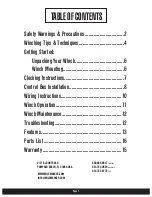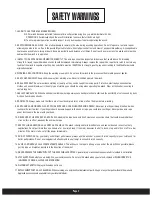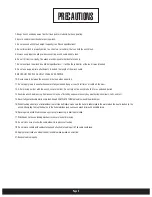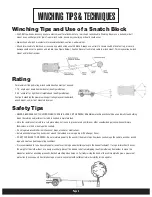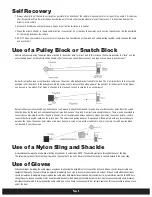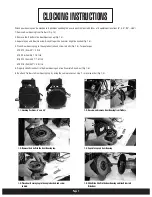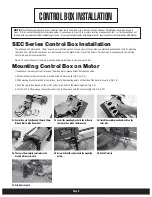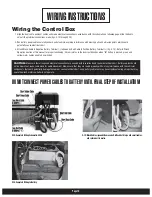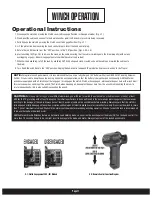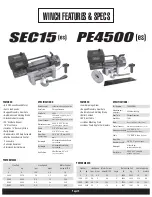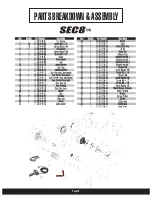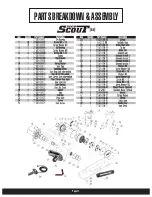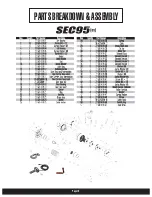
Self Recovery
Use of a Pulley Block or Snatch Block
Use of a Nylon Sling and Shackle
Use of Gloves
1. Always attempt to get the cable as straight as possible to the direction of the vehicle. It is acceptable to start a pull at an angle if it is obvious
that the vehicle will turn towards the hook anchoring point. Turning the steering wheel will assist the process. It is recommended that the
driver is in the vehicle.
2. Make sure hand brake and foot brake are free and that the transmission is in neutral.
3. When the driver’s attempt to regain vehicle traction is successful, he or she should be careful not to overrun the cable and risk the possibility
of it being trapped under the vehicle.
4. DO NOT move your vehicle in reverse to assist the winch. The combination of the winch and vehicle pulling together could overload the cable
and winch itself.
Vehicle self-recovery using the pulley block attached to the anchor point for direct pull. In this instance the vehicle becomes the “load” and the
actual pulling power on the vehicle will be double at half winch rope speed. Never connect wire rope or hook back to winch mount!
A shackle should always be used when attaching winch hooks to nylon slings. NOTE: The shackle must pass through both eyes of the sling.
The safe working load of the nylon sling is based on the use of both eye ends. Never use the cable or hook to connect directly to the nylon sling.
When handling or rewinding the cable always use gloves to eliminate the possibility of cuts caused by burrs and broken strands. Inspect cable and
equipment frequently. The cable should be replaced immediately if any sign of burrs or broken strands are evident. A frayed cable with broken strands
should be replaced immediately. Always replace the cable with a Mile Marker recommended replacement part. Any substitution must be IDENTICAL in
strength, quality, lay and stranding. Never hook the cable back onto itself. Hooking the cable back onto itself creates an unacceptable strain, breaking
individual strands which in turn weakens the entire cable. Use a sling. Avoid continuous pulls from extreme angles as this causes cable to pile up at one
end of the drum.
Below: Direct pull on load using the winch vehicles as the anchor with pulley block attached to the load. The most important aid to successful
winching (after the winch) is the pulley block, which can be used to increase the pulling power of the winch of for indirect pulls. Pulley blocks
can be used in two modes. First mode is attached to the load and second is secured to an anchor point.
Below: Indirect pull necessitated by obstructions or soft ground. Pulley block attached to load using a suitable anchor point. Note the angled
direction taken by the load and subsequent angle of rope feed-back on the winch drum (extreme example shown). There may be unavoidable
circumstances requiring this mode, though in general it is not recommended unless applied in stages by moving the anchor point or vehicle
to avoid the sharp angled rewind on the winch drum. The actual load pulling power and rope speed will depreciate with any increased angle
between the ropes. The anchor point, when used must be secure, using a tree, another vehicle or any firm structure to which a pulley block
can be used to your advantage.
Page 5
Summary of Contents for 76-50115BW
Page 17: ...PARTS BREAKDOWN ASSEMBLY Page 16...
Page 18: ...PARTS BREAKDOWN ASSEMBLY Page 17...
Page 19: ...PARTS BREAKDOWN ASSEMBLY Page 18...
Page 20: ...PARTS BREAKDOWN ASSEMBLY Page 19...
Page 21: ...PARTS BREAKDOWN ASSEMBLY Page 20...


